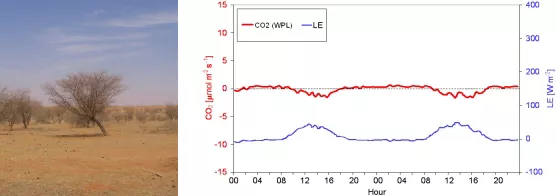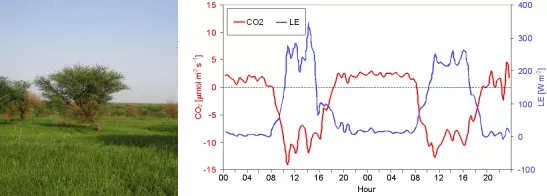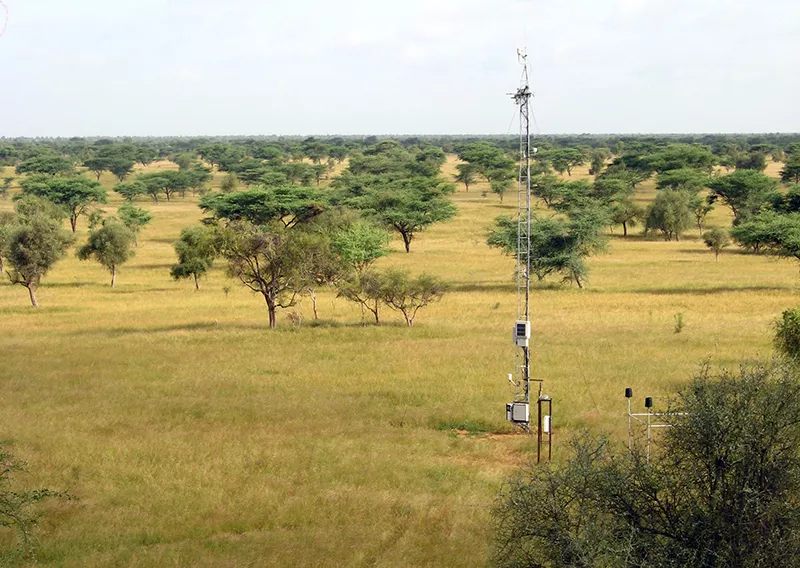Carbon dioxide and water fluxes in Sudan and Senegal
In many of the northern ecosystems, temperature is a strongly regulating factor of vegetation activity. During the warm summer activity and productivity are high, whereas during the cooler winter the vegetation activity is lower. In semi arid Africa, however, it is water availability, not temperature, that is the main regulating factor.
Monitoring the vegetation productivity
During photosynthesis plants open up microscopic holes in the leaves, stomata, to allow carbon dioxide (CO2) to enter the leaf. At the same time water is released out into the atmosphere. Therefore, by measuring the fluxes of CO2 and water in an ecosystem, we can directly monitor the health and productivity of vegetation.
Flux data of water and carbon dioxide
The graphs show flux data of water and carbon dioxide.Negative CO2 flux values mean that the vegetation is taking up carbon through photosynthesis, while positive values indicate that the respiration taking place in the vegetation and in the soil is dominating. This is typical during nighttime, when there is no sunlight. For water, the results are typically recalculated into latent heat flux (LE). This is possible because the amount of energy required to evaporate 1 gram of water is known to be 2500 J. A positive flux means that water vapor is being released into the atmosphere.
Sudan
The figures below show CO2 (red curves, left Y-axes) and water (blue, right Y-axes) fluxes, as measured over 48-hour periods during both the dry season and the moist season at a place called Demokeya in Sudan. There are clear differences between the dry and moist seasons, indicating the importance of water for this ecosystem. During the dry season is there almost no water available to the plants, which is why the fluxes of both CO2 and water (LE) are low.
You can read more about this project in our poster (PDF file) that was presented at the 2006 ILEAPS conference.
Senegal
In Dahara, Senegal do we perform measurements in cooperation with University of Copenhagen. The basic idea is to perform advanced and detailed in situ measurements of ecosystem properties and processes to increase understanding of the role savannas and grassland play in the global carbon cycle. Since 2002 have field measurements been performed at Dahra in Senegal and it now includes a comprehensive set of measurements relevant for studies of ecosystem properties and processes in semi arid savannas.
See a detailed site description in Tagesson et al 2014.




